Anthropology
-
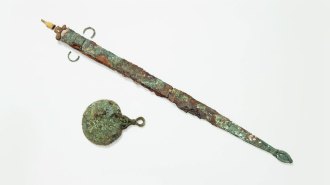 Archaeology
ArchaeologyA mysterious ancient grave with a sword and mirror belonged to a woman
The items hint that she fought in or helped plan raids and defensive actions in what’s now southwestern England about 2,000 years ago, scientists speculate.
By Bruce Bower -
 Psychology
PsychologyWhy scientists are expanding the definition of loneliness
Feeling detached from animals, places and routines can cause loneliness, researchers are learning, which may expand the list of interventions.
By Sujata Gupta -
 Anthropology
AnthropologySurprisingly long-lived wild female chimps go through menopause
Chimpanzees in Uganda are the first known example of wild, nonhuman primates experiencing the hormonal changes, raising questions about how menopause evolved.
By Bruce Bower -
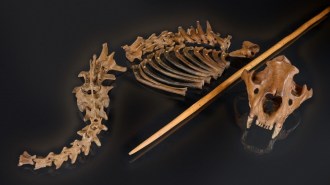 Archaeology
ArchaeologyNeandertals hunted cave lions at least 48,000 years ago
A new study reports the first direct evidence of Neandertals slaying the big cats, and the earliest evidence of any hominids killing a large predator.
By Bruce Bower -
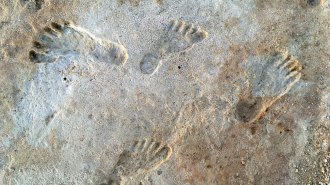 Archaeology
ArchaeologyHuman footprints in New Mexico really may be surprisingly ancient, new dating shows
Two dating methods find that human tracks in White Sands National Park in New Mexico are roughly 22,000 years old, aligning with a previous estimate.
-
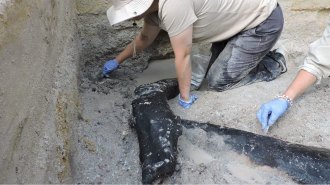 Anthropology
AnthropologyInterlocking logs may be evidence of the oldest known wooden structure
Roughly 480,000-year-old wooden find from Zambia suggests early hominids were more skilled at structuring their environments than scientists realized.
-
 Anthropology
AnthropologyExtreme cold may have nearly wiped out human ancestors 900,000 years ago
Ancestral populations had rebounded by about 800,000 years ago, heralding the evolution of people today, a contested DNA analysis suggests.
By Bruce Bower -
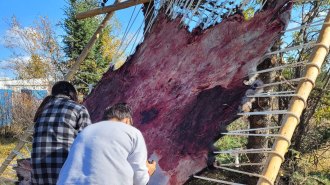 Psychology
PsychologyAn apology to Indigenous communities sparks a mental health rethink
The leading U.S. psychological association pledged to embrace Indigenous approaches to healing, which requires rethinking how to address mental health.
By Sujata Gupta -
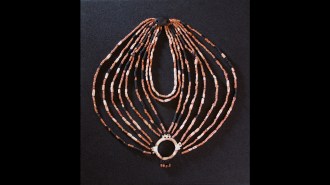 Archaeology
ArchaeologyA child’s ornate necklace highlights ancient farmers’ social complexity
The intricate necklace, reconstructed by researchers, was found on the remains of a child buried about 9,000 years ago in a Middle Eastern village.
By Bruce Bower -
 Chemistry
ChemistryHow Benjamin Franklin fought money counterfeiters
Researchers are confirming some of the techniques that Benjamin Franklin and his associates used to help early American paper currency succeed.
-
 Humans
HumansLauren Schroeder looks beyond natural selection to rethink human evolution
Paleoanthropologists studying the fossil record have long focused on natural selection, but other processes play a big role too.
By Anna Gibbs -
 Archaeology
ArchaeologyHow Asia’s first nomadic empire broke the rules of imperial expansion
New studies reveal clues to how mobile rulers assembled a multiethnic empire of herders known as the Xiongnu more than 2,000 years ago.
By Bruce Bower